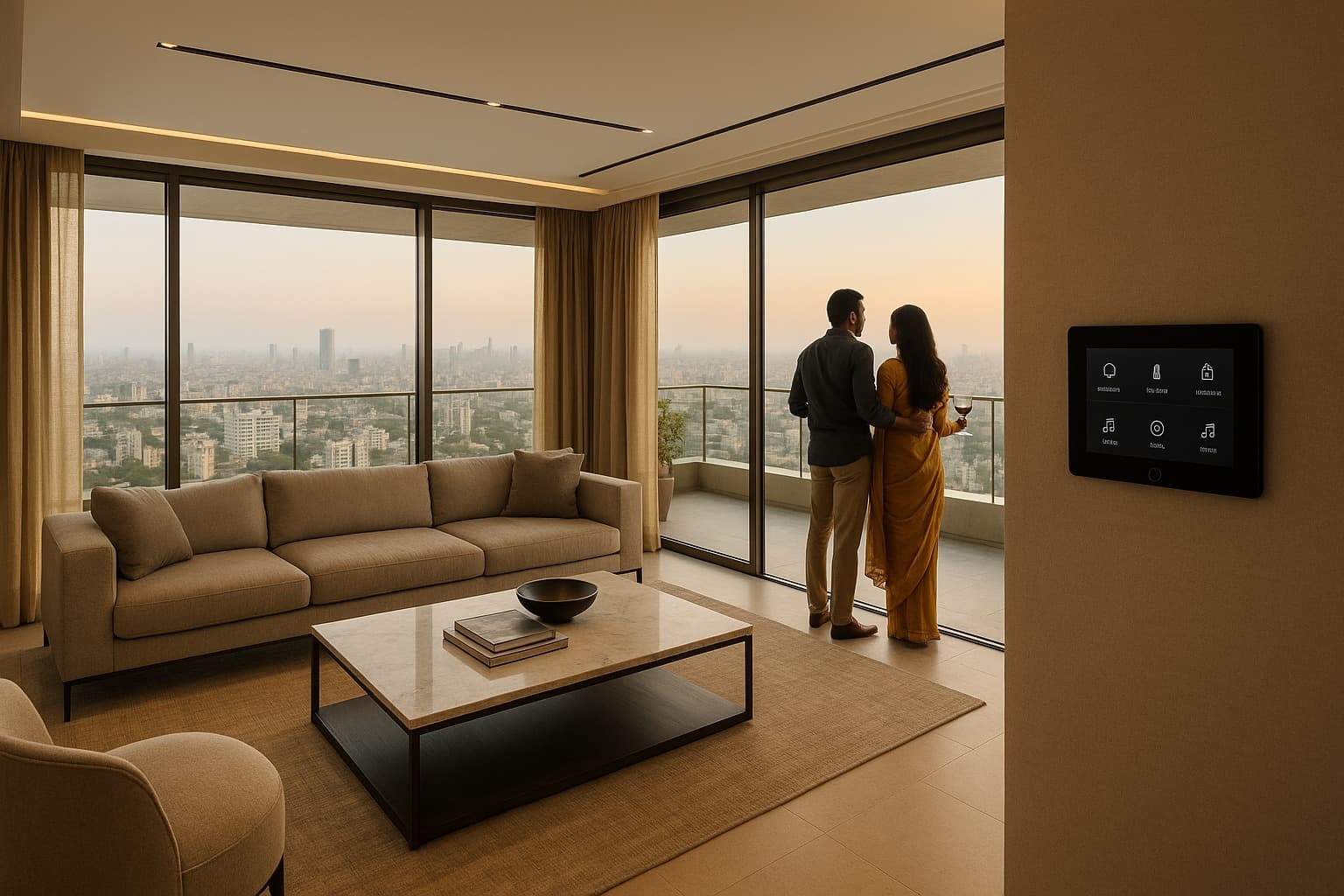India Luxury Housing Market: Trends, Drivers, and Future Outlook (2025)
Summary
India's luxury housing market is booming, fueled by rising affluence, NRI investments, and demand for smart, sustainable homes. Metro cities lead the growth, offering exclusive lifestyles and strong appreciation potential, shaping a resilient and aspirational segment.

Luxury Housing Sales Insights
Luxury housing in India has always been more than just a real estate segment; it is a symbol of status, lifestyle, and aspiration. Over the years, cities like Mumbai, Delhi, Bengaluru, and Pune have emerged as epicenters of premium real estate, attracting not only high-net-worth individuals but also corporate executives and NRIs seeking opulent homes. The luxury housing market in India has demonstrated resilience, even during economic fluctuations and global disruptions. Moving into 2025, the market for luxury homes is poised for significant growth, fueled by rising disposable incomes, lifestyle aspirations, and urban development.
Current Trends in Luxury Housing
In today’s market, buyers are looking for more than just square footage. They seek lifestyle experiences, privacy, and convenience. The demand for premium homes in metro cities has shifted from purely location-driven to experience-driven. Modern luxury flats now offer private gyms, infinity pools, smart home automation, landscaped gardens, and concierge services. This shift shows that Indian buyers are prioritizing both comfort and exclusivity.
Cities like Mumbai remain the gold standard. South Mumbai, Worli, and Juhu are hotspots where luxury flats Mumbai command multi-crore prices. Bengaluru’s Whitefield and central areas, along with Delhi’s Golf Links and Vasant Vihar, have also seen a surge in high-end home sales. The appeal of these neighborhoods lies in the combination of strategic location, quality development, and integrated amenities.
What’s Driving Luxury Housing Sales
Several factors are fueling luxury housing sales growth in India:
Rising Affluence: With India’s growing population of high-net-worth individuals, first-time luxury homeowners are entering the market. Many buyers view these homes as long-term investments with lifestyle benefits.
Urbanisation & Metro Expansion: Infrastructure developments, new metro lines, and road connectivity are expanding the boundaries of luxury neighborhoods, turning previously peripheral areas into property hotspots.
NRI & Global Investors: NRIs continue to be active buyers, especially in Mumbai and Delhi. International investors are drawn by capital appreciation, city connectivity, and the emotional value of owning a home in India.
Customized, Smart Homes: Buyers increasingly demand personalized interiors, tech-enabled homes, and eco-friendly features. Developers are responding with smart solutions, energy-efficient designs, and tailored layouts.
Economic Resilience: Unlike mid-segment properties, luxury homes have remained largely insulated from short-term economic challenges. Buyers prioritize exclusivity, location, and long-term value over immediate price fluctuations.
Sales Patterns & Market Insights

Analysis of luxury property market trends 2025 reveals a few key insights:
Metro cities dominate sales volume and transaction value. Mumbai, Delhi-NCR, and Bengaluru continue to be the preferred destinations.
Integrated townships and gated communities are increasingly popular, offering security, amenities, and a sense of community.
Vertical developments with panoramic city views, private terraces, and smart amenities are now preferred over traditional bungalows.
Both domestic buyers and NRIs drive demand, leading to steady property appreciation.
These trends suggest that lifestyle, convenience, and smart design now define high-end housing demand in India, rather than just size or location.
Regional Insights
Mumbai:
The city continues to lead in luxury housing, with multi-crore transactions in Worli, Lower Parel, and Bandra. Developers offer ultra-luxury penthouses to cater to HNIs and celebrities, reflecting the growing emphasis on experiential living.
Delhi-NCR:
Areas like Golf Links, Vasant Vihar, and South Extension remain strongholds. Luxury apartments now include private elevators, rooftop amenities, and high-tech security, appealing to both domestic and NRI buyers.
Bengaluru:
Driven by IT growth, luxury housing in Whitefield, Sarjapur, and Koramangala has surged. Professionals seek high-end apartments that balance lifestyle, proximity to work, and amenities. Eco-friendly, sustainable designs are also gaining traction.
Challenges Facing the Luxury Segment
Despite strong demand, the luxury housing sector faces hurdles:
High Entry Costs: The multi-crore price point limits buyers to affluent individuals.
Project Delays: Premium projects require sophisticated construction and longer timelines.

Economic Sensitivity: Interest rates, taxation, and policy changes can affect buyer sentiment.
Sustainability Expectations: Buyers increasingly demand eco-friendly designs, and developers who ignore this trend may lose competitive edge.
Developers need to address these challenges by offering timely delivery, transparency, and sustainability to maintain buyer trust and interest.
The Road Ahead
Looking beyond 2025, the luxury housing market in India is expected to remain resilient. Growth will be driven by:
Expanding metro and suburban luxury hubs.
Integration of smart home technology and green building practices.
Continued NRI and foreign investment.
Emerging tier-2 cities with strong employment and infrastructure growth.
Developers who focus on lifestyle-oriented projects, technology, and sustainability will capture the most value. Luxury homes are no longer just about space—they are about convenience, experience, and long-term appreciation.
Conclusion
The Indian luxury housing market is evolving rapidly, with lifestyle, convenience, and sustainability at its core. Luxury housing sales insights in India 2025 point to robust growth in metro cities, led by domestic HNIs and global investors. Smart homes, gated communities, and eco-friendly projects are increasingly preferred. Developers who adapt to these trends while ensuring quality, transparency, and timely delivery will thrive. The market is not just about owning a home; it’s about enjoying a premium lifestyle and investing in properties that appreciate steadily in value, making luxury housing a resilient and aspirational segment.
Summary (100 words)
India’s luxury housing sector is booming, with metro cities like Mumbai, Delhi-NCR, and Bengaluru leading the way. Growth is driven by rising wealth, NRIs and global investors, and lifestyle-oriented buyer preferences. Modern buyers prioritize smart homes, gated communities, and eco-friendly designs. Vertical luxury apartments, integrated townships, and experiential living are now in demand. Despite challenges like high prices and project delays, the segment remains resilient. Developers who focus on quality, technology, sustainability, and timely delivery will thrive. The future of luxury housing in India is promising, combining investment potential with lifestyle, exclusivity, and long-term value for discerning buyers.
